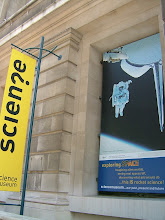Stanford University and three other California schools have formed a joint effort to advance research of spintronics, a technology that one day could lead to computers that begin working as soon as the power comes on.
The project, called the Western Institute of Nanoelectronics (WIN), will have its administrative headquarters at UCLA Henry Samueli School of Engineering and Applied Science, one of the four member institutions. Scientific and technical work will also be dispersed over the campuses of Stanford, the University of California at Berkeley and UC Santa Barbara.
WIN is being established with grants of $18.2 million to be dispersed over four years, largely from semiconductor companies with an interest in breakthroughs in spintronics, which holds promise in minimizing power consumption for next-generation consumer electronics. Chipmaker Intel granted the project $2 million, along with $10 million in equipment. The Nanoelectronics Research Initiative, a grant funded by computer companies IBM, Texas Instruments, Advanced Micro Devices and Intel, among others, provided $2.38 million.
The group expects the participating universities to spend more than $200 million in infrastructure and personnel support for the project over those four years.
Researchers say that chipmakers in the coming years will likely hit a barrier in Moore's Law that could prevent chip designers from gaining performance by shrinking their chips, the engine behind the exponential growth in computer power for more than three decades.
"Simply put, today's devices, which are based on complementary metal oxide semiconductor standards, can't get much smaller and still function properly and effectively. That's where spintronics comes in," said UCLA engineering professor Kang Wang, who will act as director of the institute.
Spintronics uses the spin of an electron to carry digital information. Until now and for years to come, data-processing technology has relied on charge-based devices, ranging from vacuum tubes to million-transistor microchips. Conventional electronic devices move these electric charges around, ignoring the spin that piggybacks on each electron. The study of spintronics intends to use that extra spin, turning those electrons into one smooth reactive chain of motion.
The metaphorical name of the technology derives from way electrons are said to spin.
From: http://www.news.com/2100-1008_3-6048228.html
skip to main |
skip to sidebar
站在巨人的肩膀上 追尋著愛奧尼亞式迷情的源頭 找尋著存在的意義 心靈最深層的印記 烙印著傳承的使命 隨著宇宙萬物幻化 開啟不朽之殿堂









沒有留言:
張貼留言